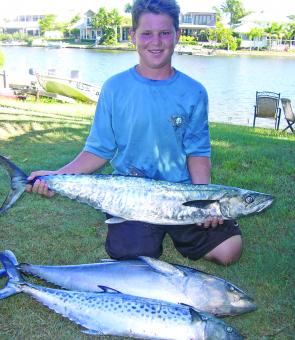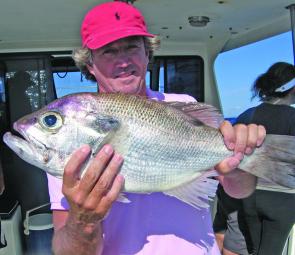January is a busy month right along the Sunshine Coast, particularly so in the vast Noosa River system. A veritable flotilla of variously sized vessels is present on the water from pre dawn until late at night and as such the limited parking facilities are quickly exhausted.
Do yourself a favour and plan well ahead. Have the boat ready to go the night before and arrive at the ramp so that launching can be made with a minimum of fuss. No one likes to queue at the ramp, and this can be particularly frustrating when anglers take forever to get organised and remove their boat from the trailer.
The lower reaches of the Noosa system are bordering on chaos early in the year. Jet skiers often get carried away with the festive season and they frequently end up in hospital. There are seasonal speed limited areas in the Noosa River and they are well signed so please observe speed limits. The main area to be very careful in is from the T-Boats office all the way down to the river mouth. This area is designated at six knots maximum from 1 December 2007 through to 31 January 2008. Plenty of speeding tickets are handed out at this time of year so be warned.
Upstream the speed limit is 20 knots from the T-Boats office and 40 knots in the ski runs.
Another issue of significance to local fisheries patrol officers is mandatory equipment that you need to have on board your boat. Life jackets need to be in good condition and rated PFD 2 or 3 for use in the river or PFD 1 for those who venture across the bar. Please also ensure that flares and EPIRB’s have not expired!
Of course fisheries compliance is another issue with rules and regulations changing from year to year. The best way to be sure you are fishing within the guidelines is to collect the relevant brochure from a tackle store or the QLD Boating and Fisheries Patrol Office adjacent to the caravan park at Munna Point.
The main issue inside the river is the slot limit now placed on mud or dusky flathead. Any flathead should be considered to be this species and they must be immediately returned to the water if they are under 40 centimetres or over 70 centimetres. If you have a fish in your possession that is regulated (outside this slot limit) you will be fined. Even if one of these regulated fish dies during capture it must be returned to the water.
Bluewater angling regulations are quite complex these days. It really does pay to have the relevant brochure on board as well as an accurate measuring device. A quality fish identification book is also a very handy item to have handy at all times when fishing.
The pelagic season will hopefully be well underway by the New Year. Laguna Bay and the close water off Mooloolaba and Caloundra often contain big schools of mackerel and tuna. The southern areas of the Sunshine Coast seem to fire first with schools arriving from the north but taking up station initially from the south.
A selection of small chrome slugs will come in very handy at this time of year. Try and match your offering to the baitfish as closely as possible. Start with mono leader and if you find you are being bitten off too frequently switch to a light grade of single strand wire. This may reduce hookups somewhat but at least you will land the fish!
Larger species such as Spanish mackerel and various tuna species are also taken by slug casters along with. Trollers do well, as do those that berley and cube. A live offering drifted away from the boat under a balloon will rarely go unnoticed in January, particularly if a berley trail has been implemented.
The average size of the Spaniards during January is 10kg or so with the occasional larger specimen testing anglers and their equipment. As summer progresses the size of the mackerel increases. Similarly, northern bluefin tuna and the odd stray yellowfin are caught early in the year. Pretty much the same tactics we use for mackerel work for the tunas as well!
Those that choose to bait fish for bottom dwellers should be able to secure a feed of Moses perch, squire, pearl perch, parrot fish and sweetlip on most of the easily accessible reefs. A few big snapper will be landed during January and for those that are partial to coral trout Sunshine Reef is a great area to try. This is a vast area and sometimes it takes a while to find active fish but your efforts will be well rewarded if you bring home a fat trout or two. Cobia, Maori cod and a few estuary cod will also be on the chew early in the year with North Reef a good bet for these species.
Reads: 1444
Chris Lacey with a fine brace of mackerel and tuna from Sunshine Reef.

Pearl perch are a mainstay for offshore fishermen year round. This one was caught at North Reef.

These monster Spanish mackerel weighed in at 35 kilos or so a piece. Keen Sunshine Coast anglers Mark Tippet and Craig Hinds caught them out at the Swains Reef system.




